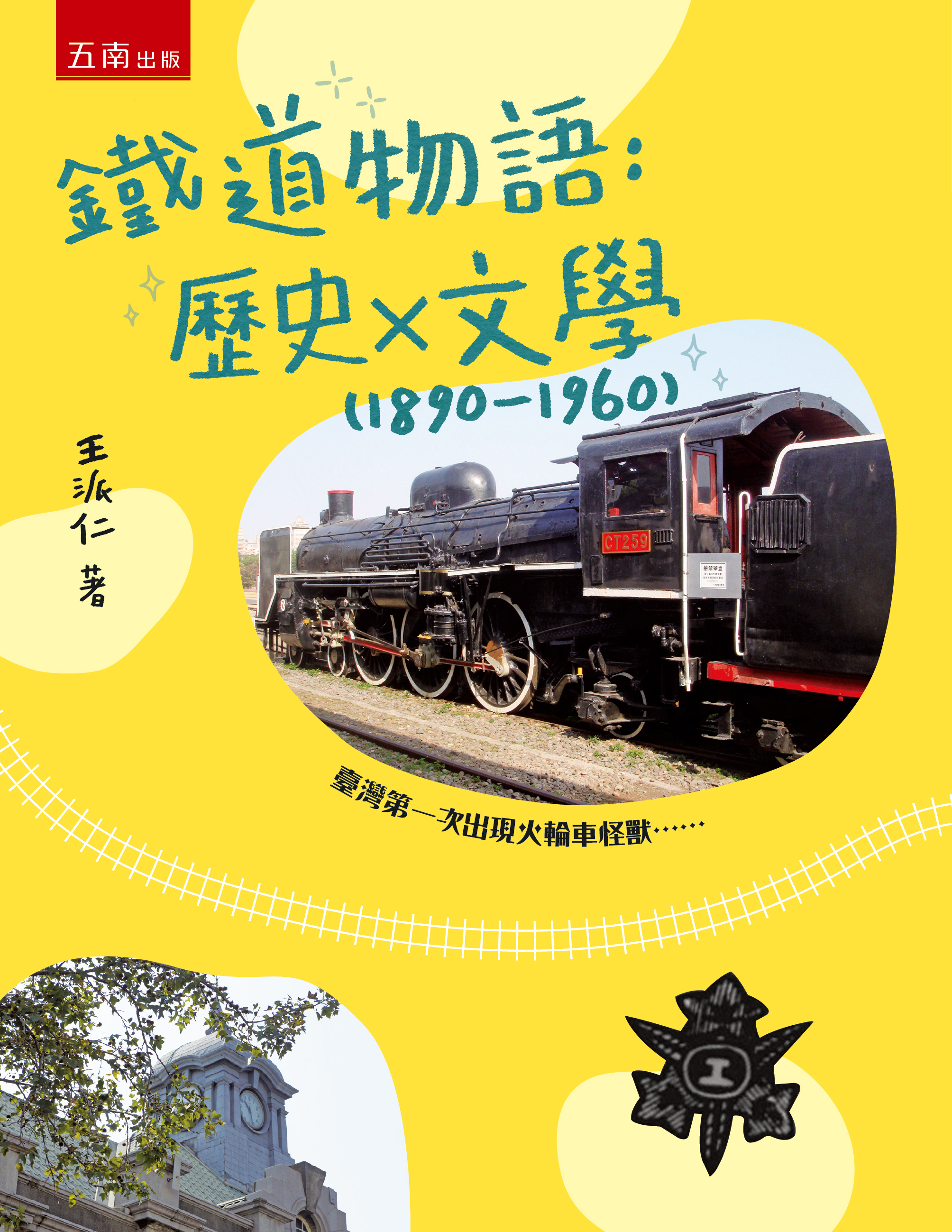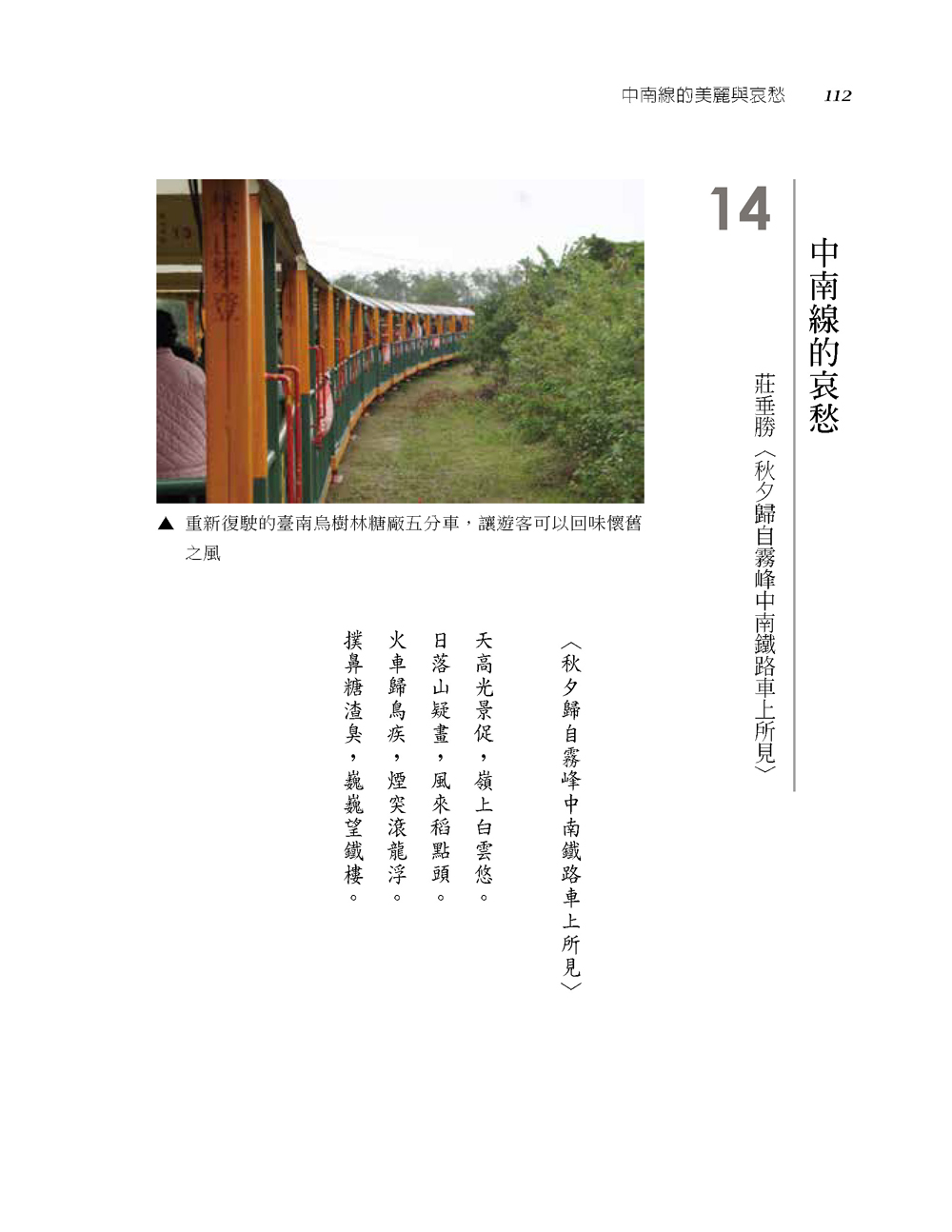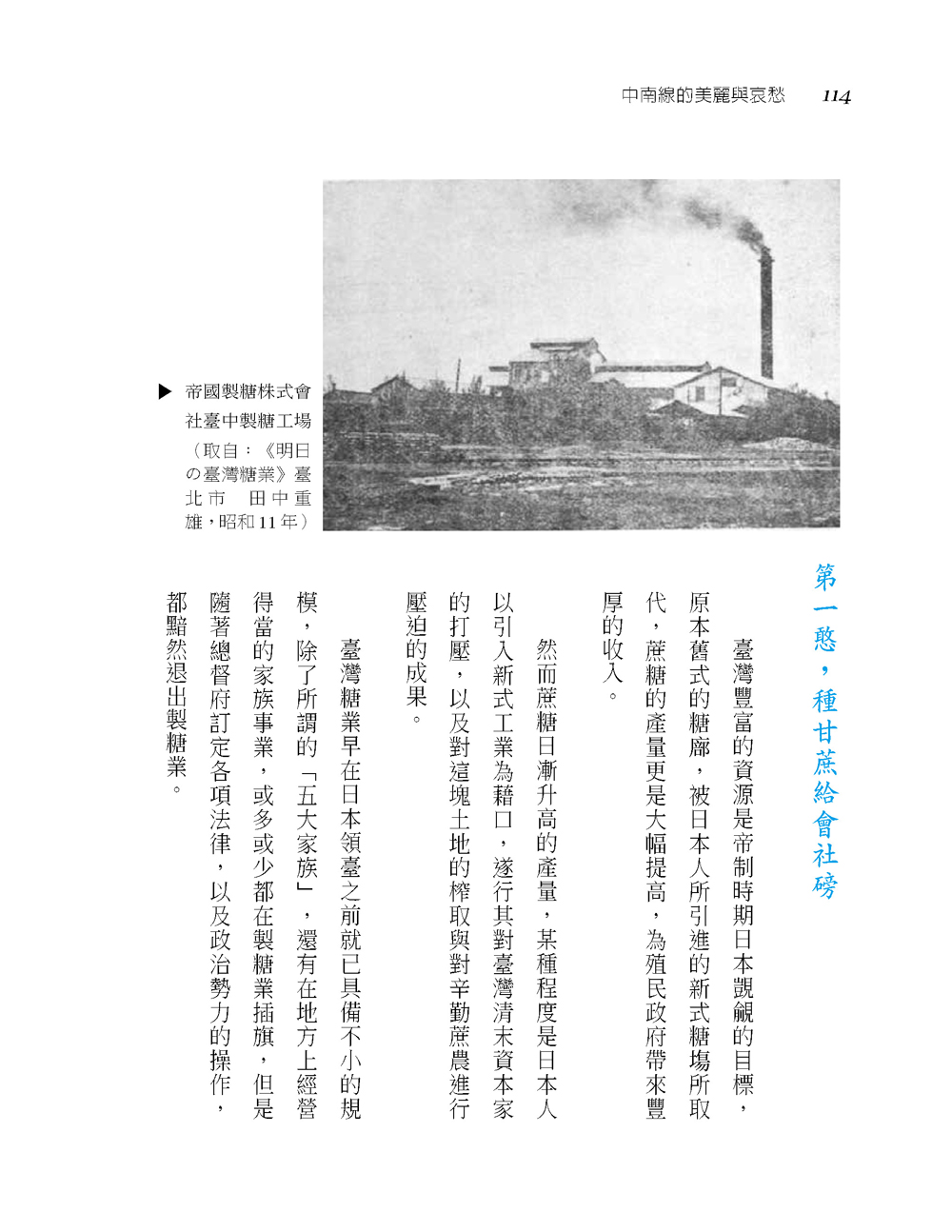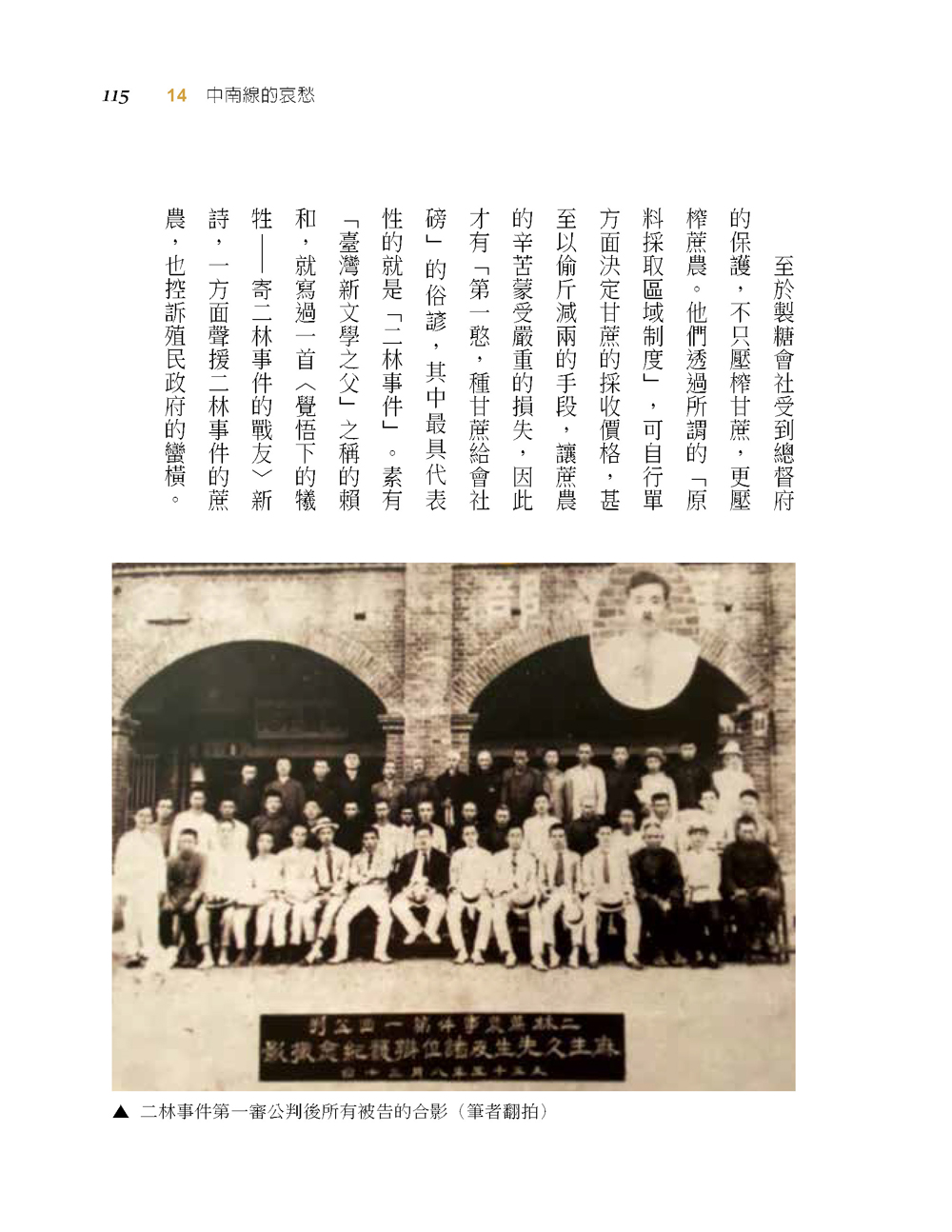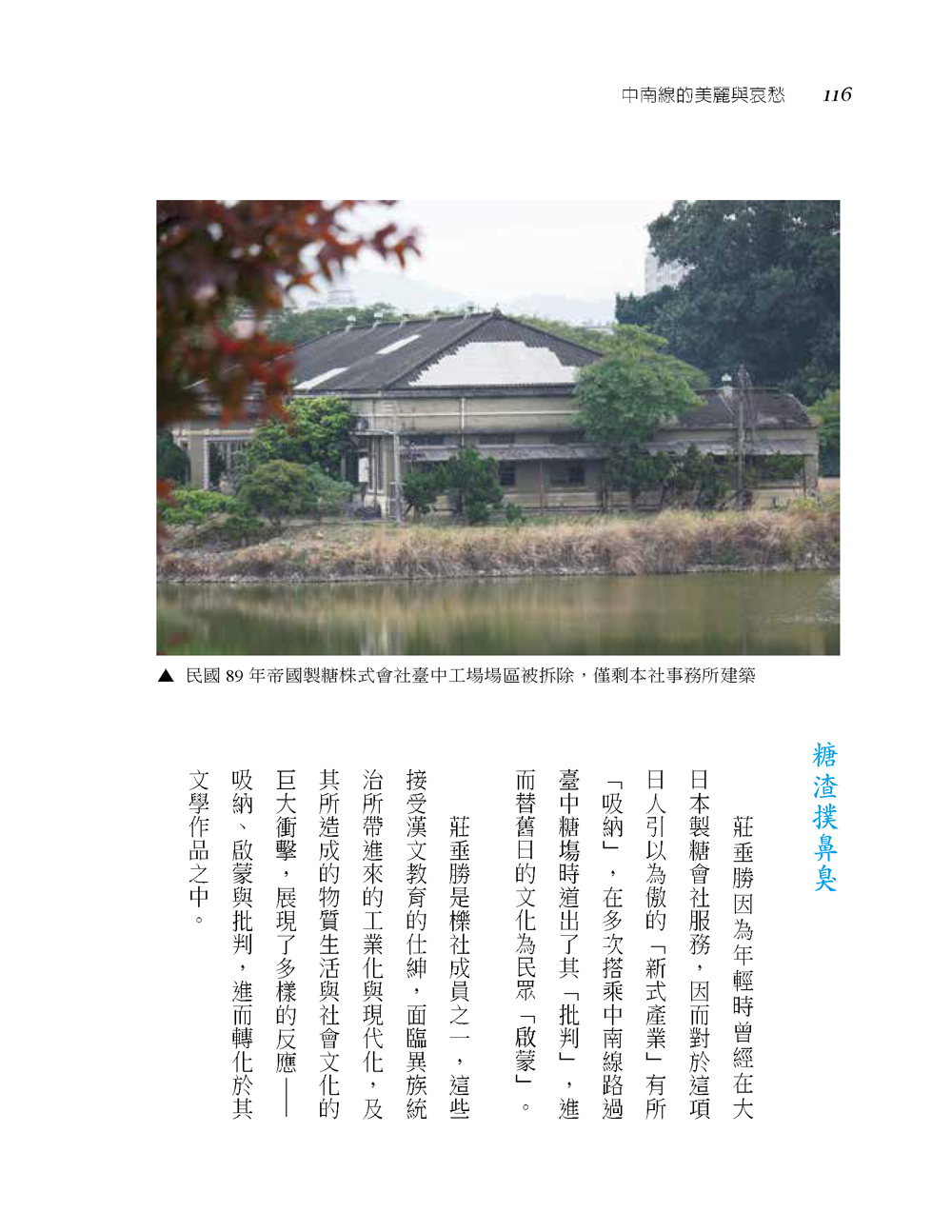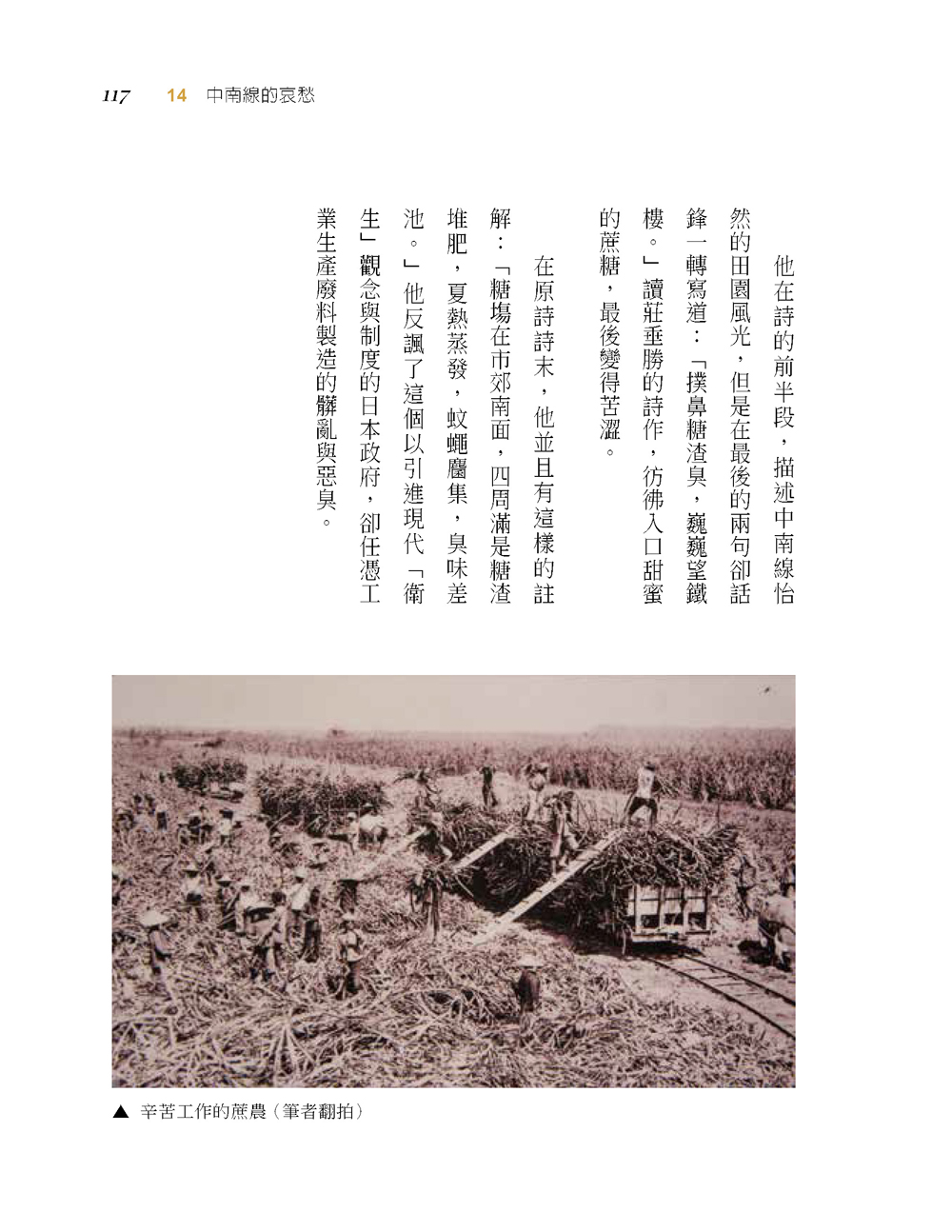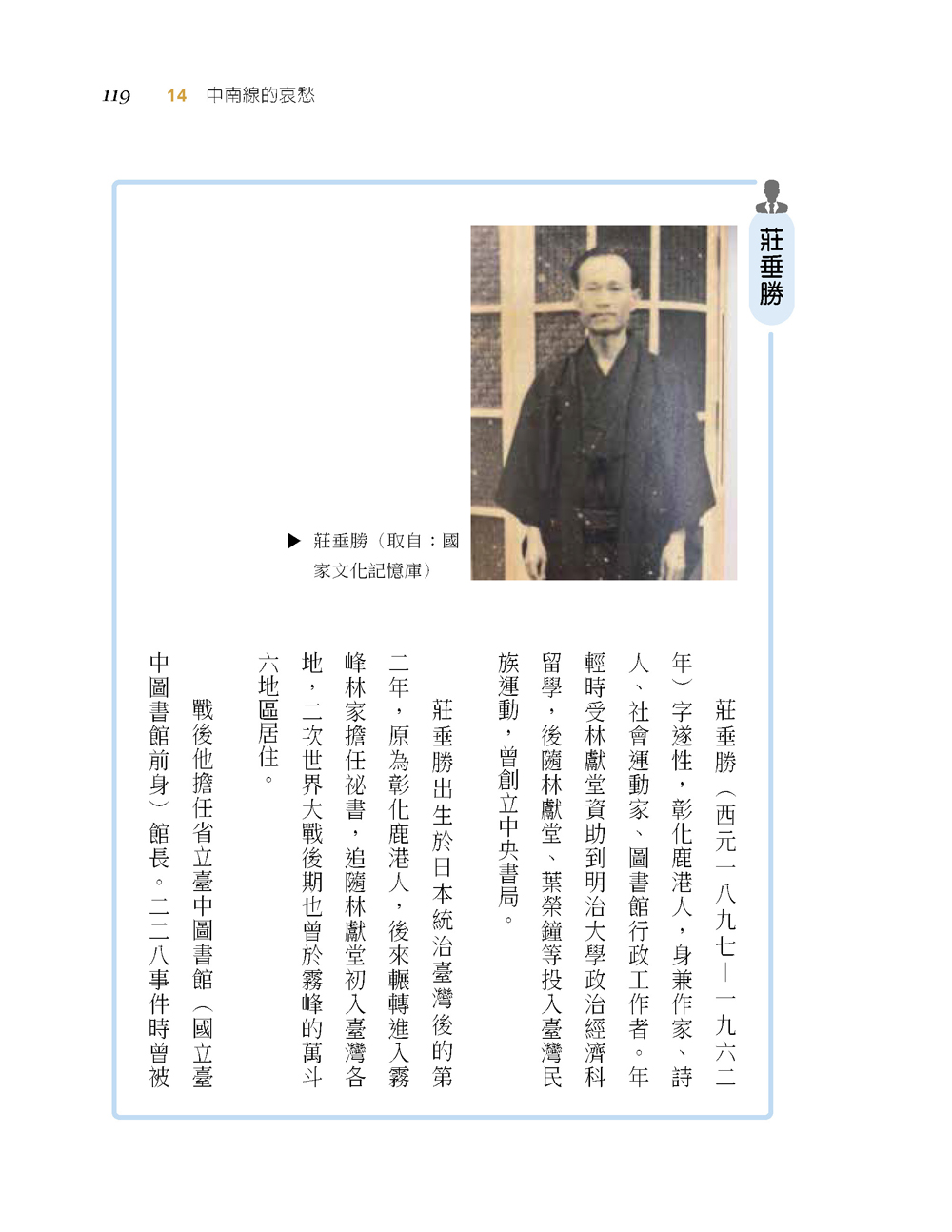鐵道物語:歷史 × 文學(1890-1960)
Railway Stories: History × Literature (1890-1960)
歷史/時代 文化融合
2025 實體出版
當十九世紀末,臺灣第一次出現「火輪車怪獸」——蒸汽火車,一時文人仕紳訝異抗拒,到日常便利,鐵道改寫了文人的世界觀,他們用詩、小說與歷史拼起文字風景,讓後人得以重返鐵道初現的歷史與文化軌跡。
At the end of the 19th century, steam locomotives were first introduced to Taiwan. The construction of railways brought more than just convenience to transportation. At that time, scholars and officials such as Nishikawa Man, Wu Zhuoliu, and Chen Qianwu first encountered the construction of railways. They were superstitious that the railways would "destroy feng shui" and were surprised and resistant to the huge, black "steam trains" they had never seen before. Later, they had different views on the convenience of transportation. They recorded what they saw and heard on the railways through poems, essays, and novels, either leisurely or critically...
作者介紹
-
作者
王派仁
曾任大學兼任講師、教育部九年一貫社會領域教科書審查委員、南一書局社會學習領域教科書主編寫。現任臺中市山陽國小校長。
作者介紹
-
作者
Pay-ren,Wang
He has served as a part-time lecturer at a university, a reviewer of the Ministry of Education's nine-year social studies textbooks, and the chief editor of Nanyi Bookstore's social studies textbooks. He is currently the principal of Shanyang Elementary School in Taichung City.
作品簡介
十九世紀末,蒸汽火車剛傳入臺灣,興建鐵道帶來的不僅僅是交通往來的便利,當時候的西川滿、吳濁流、陳千武等文人仕紳初遇鐵道興建,過程中有「破壞風水」的迷信及未曾見過之巨大黝黑的「火輪車」的訝異抗拒,到後來往來便利等等的不同見識,一 一透過詩、散文、小說紀錄鐵道上的所見所聞,或者悠然、或者批判……。當時的畫面及車站多已不再,如今可以跟隨筆者的腳步,一窺清末、日治時期及民國的仕紳筆下的鐵道文學風景。 附錄兩首鐵道臺語歌QR-Code。 翻開書,來一趟隨興卻不隨便的火車旅行吧!
作品簡介
At the end of the 19th century, steam locomotives were first introduced to Taiwan. The construction of railways brought more than just convenience to transportation. At that time, scholars and officials such as Nishikawa Man, Wu Zhuoliu, and Chen Qianwu first encountered the construction of railways. They were superstitious that the railways would "destroy feng shui" and were surprised and resistant to the huge, black "steam trains" they had never seen before. Later, they had different views on the convenience of transportation. They recorded what they saw and heard on the railways through poems, essays, and novels, either leisurely or critically... Most of the scenes and stations at that time no longer exist, but now you can follow the author's footsteps to get a glimpse of the railway literary landscape as written by the gentry of the late Qing Dynasty, the Japanese colonial period and the Republic of China.
出版資訊
- 類型風格 歷史/時代 、 文化融合
- 作品尺寸 L: 17 × W: 22 cm cm
- 作品集數 1集已完結
- 出版年份 2025
-
出版方式
實體出版
- ISBN(實體) 978-626-393-770-3
- 適合年齡 不分年齡
- 是否為跨國題材 是,關於日本 、 是,關於中國 、 是,關於其他
- 作品規格(頁數) 180
- 作品規格(字數) 70380
- 銷售實績 不公開
- 銷售實績 不公開
-
其他補充資訊
不公開
- 其他參考連結
- 媒合目的 版權交易
